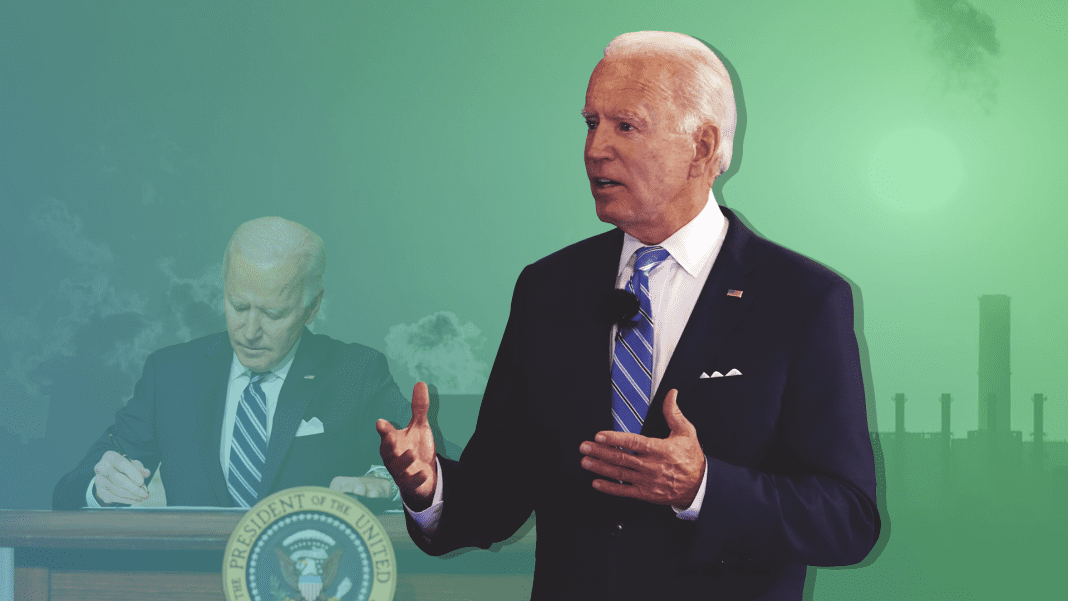President Joe Biden is moving the United States closer to reducing greenhouse gas emissions by even more. During the two-day virtual meeting with many world leaders, including Russian President Vladimir Putin and Chinese President Xi Jinping, Biden pledged to cut emissions by 50 to 52% by 2030, compared to 2005 levels.
To achieve this goal, the government will need to supply financial help and incentives to support the mass roll-out of new electric vehicles. To become a zero-emissions country, a lot of things will need to change, and all of that costs money.
Biden’s new goal isn’t just aggressive; it also doubles the 2015 benchmark that was set by former President Barack Obama. He had planned to achieve a 26 to 28% greenhouse gas emission reduction by 2025. Still, there is a lot of work to do. The Environmental Protection Agency states that greenhouse gas emissions were only down 10% under 2005 levels when recorded in 2020.
The new policies face a lot of pushbacks. On the one hand, Republicans are criticizing the pledge claiming it will hurt us on the global market and make China more powerful. However, environmental groups are supportive of the 50% benchmark but are also demanding more change. The groups claim that these initiatives don’t do enough to help our environment. In fact, prominent groups, such as the Center for Biological Diversity and the Sunrise Movement, have recently pushed a report recommending a 70% cut to emissions from the 2005 levels.
This climate summit will provide the first of many changes to come. As the world leaders continue rallying efforts to tackle climate change, we will continue seeing many policies down the pipeline. For now, China remains the leading greenhouse gas emitter across the world. Behind China is the United States, India, Russia and also Japan.
Initially, the Chinese government criticized U.S.’s ability to lead climate change meetings after removing itself from the Paris Agreement. Since that initial criticism, these two countries released a new joint statement dedicating their commitment to working together on emissions reduction.
This new pledge shows that Americans will need to change their way of life in order to comply. Not only will coal completely disappear from electricity production, but gas-guzzling vehicles will also be a target. All of these cars and trucks will need to be replaced with electric vehicles instead. The effect this will have in the automotive industry could have a profound effect that no one fully understands yet.
Thankfully, many of the top automakers have already pledged support for the worldwide changes. BMW set a new goal to reduce carbon emissions on every car by a third in the next ten years, while Ford wants to be carbon neutral by 2050. Additionally, Volvo plans to be carbon neutral by 2040 and reduce the CO2 footprint of all cars by 40% by the year 2025.
This climate meeting follows the January direction by President Biden to evaluate all Corporate Average Fuel Economy standards and automotive greenhouse gas emissions standards. It’s expected that all of these will become more stringent as we await updated regulations in July.
Additionally, there will be another critical climate meeting this year when 200 world leaders meet in Glasgow this November to attend COP26.
Did you enjoy this article from Brian Jones? Read other articles on CBT News here. Please share your thoughts, comments, or questions regarding this topic by submitting a letter to the editor here, or connect with us at newsroom@cbtnews.com.
Be sure to follow us on Facebook and Twitter to stay up to date or catch-up on all of our podcasts on demand.
While you’re here, don’t forget to subscribe to our email newsletter for all the latest auto industry news from CBT News.










